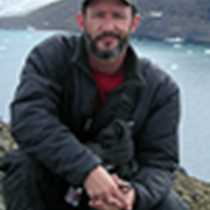Edinburgh, Scotland
After leaving Fair Isle yesterday we were at sea the rest of the afternoon and night on our way south for the first time this trip. Our destination was the capital of Scotland, Edinburgh. We arrived early in the morning and after making our way through the tidal equalizing lock from the Firth of Forth, the Endeavour was docked and after breakfast we departed the ship for a guided tour of the old and new town.
The highlight of the old walled part of town was Edinburgh Castle. It dominates the center of town as it is built on one of the seven hills of Edinburgh. These hills, including the largest, Arthur’s Seat, are all made up of basalt flows from Tertiary time, about 60 million years ago. This hilltop was no doubt occupied long before the castle was built. Many of the building are 18th and 19th-century, but a few date back to the 12th-century. The sides of the castle are steep and built right to the edge of the basalt. The intertwining of the bedrock with the walls of the castle make it quite striking and formidable to all those who wished to assault it. We had no problem breaching the gate, however, as our tour guide explained the cultural history of the castle. Part of the tour was to see the Regalia, which consisted of the crown, scepter, sword, and the most intriguing piece, the stone of destiny. This was supposedly the stone of Jacob that made its way through Ireland to Scotland and was the coronation stone for Scottish Kings. It was taken to England in 1296 and a chair was built on it and used for the coronation of the English Royalty. The stone was returned to Scotland just a few years ago after 700 years in English hands. It did have a short escape when, in 1950, college students stole it from London and smuggled it back to Edinburgh.
The rest of the day was spent either in the port town of Leith or in the city center of Edinburgh. There were chances for some shopping or just browsing along the picturesque buildings of the new town that was constructed in the later part of the 18th-century and into the 19th-century to deal with overcrowding.
After leaving Fair Isle yesterday we were at sea the rest of the afternoon and night on our way south for the first time this trip. Our destination was the capital of Scotland, Edinburgh. We arrived early in the morning and after making our way through the tidal equalizing lock from the Firth of Forth, the Endeavour was docked and after breakfast we departed the ship for a guided tour of the old and new town.
The highlight of the old walled part of town was Edinburgh Castle. It dominates the center of town as it is built on one of the seven hills of Edinburgh. These hills, including the largest, Arthur’s Seat, are all made up of basalt flows from Tertiary time, about 60 million years ago. This hilltop was no doubt occupied long before the castle was built. Many of the building are 18th and 19th-century, but a few date back to the 12th-century. The sides of the castle are steep and built right to the edge of the basalt. The intertwining of the bedrock with the walls of the castle make it quite striking and formidable to all those who wished to assault it. We had no problem breaching the gate, however, as our tour guide explained the cultural history of the castle. Part of the tour was to see the Regalia, which consisted of the crown, scepter, sword, and the most intriguing piece, the stone of destiny. This was supposedly the stone of Jacob that made its way through Ireland to Scotland and was the coronation stone for Scottish Kings. It was taken to England in 1296 and a chair was built on it and used for the coronation of the English Royalty. The stone was returned to Scotland just a few years ago after 700 years in English hands. It did have a short escape when, in 1950, college students stole it from London and smuggled it back to Edinburgh.
The rest of the day was spent either in the port town of Leith or in the city center of Edinburgh. There were chances for some shopping or just browsing along the picturesque buildings of the new town that was constructed in the later part of the 18th-century and into the 19th-century to deal with overcrowding.




